There is one key ingredient that makes store-bought jam bad for you: refined sugar.
In this article, we'll highlight 4 different ways you can make homemade jam without using any refined sugars.
We'll even show you how to make jam without pectin!
But first. Why should you care?
The problem with store-bought jams
For every two spoons of store-bought jam you slurp down, one consists of white refined sugars.
That is 50% fruit, 50% sugar.
Sounds crazy, right? Some brands use even more sugar than that.
Be mindful of store-bought jams, as their content could have as much as 50% refined sugars or more.
And if that doesn't sound bad enough, most store-bought jams are made using only the juice of the fruit, filtering out the pulp and skin.
Doing so robs the jam of all the healthy fibres found in the skin and the pulp, leaving behind only the concentrated sugars in the juice. Fibres are essential to help slow down the absorption of sugars into your bloodstream, preventing bad things from happening.
Recently, supermarkets have started stocking more sugar-free jams, which is great. But their hefty price tag is enough to keep most people away.
But here's the thing:
Jams don't need sugar. The fruit used in preserves and marmalades has all the sweetness you need!
Therefore, you can make homemade sugar-free jams that are healthier and cheaper than store-bought ones.
Why are fruit jams made with added sugars?
If it's possible to make jams without sugar, why do big brands use sugar at all?
It's because:
Fruit is expensive, while sugar is cheap. Jams are sold by the jar, so the more of the jar you can fill with cheap ingredients, the higher the profit.
Sugar helps thicken the jam. Most fruit contains a fair amount of water, but jams are thick. When sugar dissolves in water, it forms a thickening solution that gives jams a jelly-like consistency.
Sugar allows using unripe fruit. Unripe fruits are cheaper and easier to buy, as they spend less time on the tree and can be transported from anywhere in the world. But unripe fruit tastes sour and bland! Using more sugar compensates for that.
Sugar is an effective preservative. Adding lots of sugar to food helps slow down the decaying action of microbes[1].
Luckily, unless you produce jams at scale, many of these reasonings won't matter to you.
So let us show you how to make healthy jams with nothing but wholesome ingredients and fruit!
How to successfully make healthy jam without sugar
We established that sugar makes jam thick, sweet, and extends its shelf life.
So, how do we get all these good properties into our sugar-free jam?
Let's quickly find out!
How to make sugar-free jam sweet
The easiest way to make sugar-free jam sweet is only to use very ripe fruit.
Even better if that fruit is in season and locally farmed.
When fruits ripen on a tree, they develop all that lip-smacking juice and flavour that makes seasonal fruit so incredibly superior.
That's why doing our best to buy local fruit is important.

Not only do we cut CO2 emissions by shortening the journey time from field to shelf, but we let the fruit ripen on the tree rather than in a container shipped halfway across the world.
If ripe fruit isn't an option, or if your chosen fruit is too tart for your taste, you can swap sugar with erythritol in roughly 10:7 erythritol to sugar ratio (or 1:1 if math isn't your friend!).
If you want to learn how to make sugar-free jam by using erythritol instead of sugar, check out our sugar-free orange marmalade and sugar-free papaya jam.
The nice thing about our orange marmalade is that we have adapted the recipe to work on any orange, rather than just the traditional Seville oranges. It's wonderful; you should check it out!
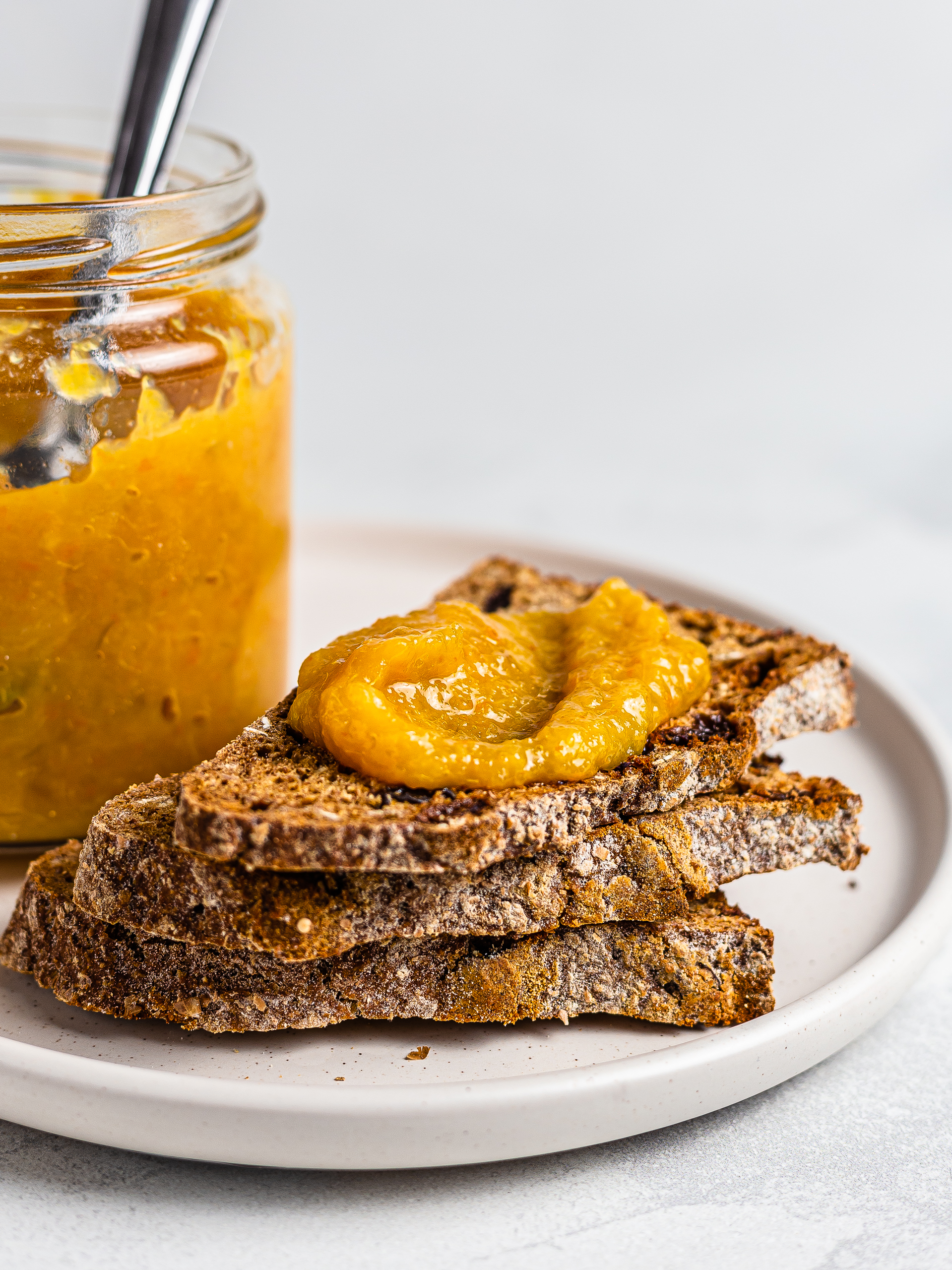
How to preserve sugar-free jam and make it last long
If you thoroughly sterilise jam jars and properly can your jam, even sugar-free jam can last for months.
And once you open the jar, the jam keeps in the fridge for 7-10 days with ease, if not longer.
Therefore, start by using small jars when canning jam. This way, you have time to finish it once opened.
Then, learn how to properly store jams with a suitable canning technique.
How to make sugar-free jam thick
The industrial way to make jam thick is by using artificial pectin and gelatin.
You can do that if you wish and even use vegan gelatins like agar-agar.
Or, you can achieve similar results with natural ingredients.
To make sugar-free jams thick and jelly-like without artificial pectin, you can use four different ingredients:
Naturally pectin-rich fruits, like apples;
Flaxseeds;
Chia seeds;
Starch (i.e. Corn, Potato, or Tapioca).
All these methods work great, but some are more suitable than others for certain jams.
Let's see why.
4 Ways to make Sugar-Free Jams without Pectin
In this section we'll tell you how the four ingredients above can be used to make super healthy recipes without a single gram of added sugars.
We'll also talk about the pros and cons of each method.
How to make sugar-free jam with pectin-rich fruits
Using pectin-rich fruits like apples is the traditional way to make sugar-free jam.
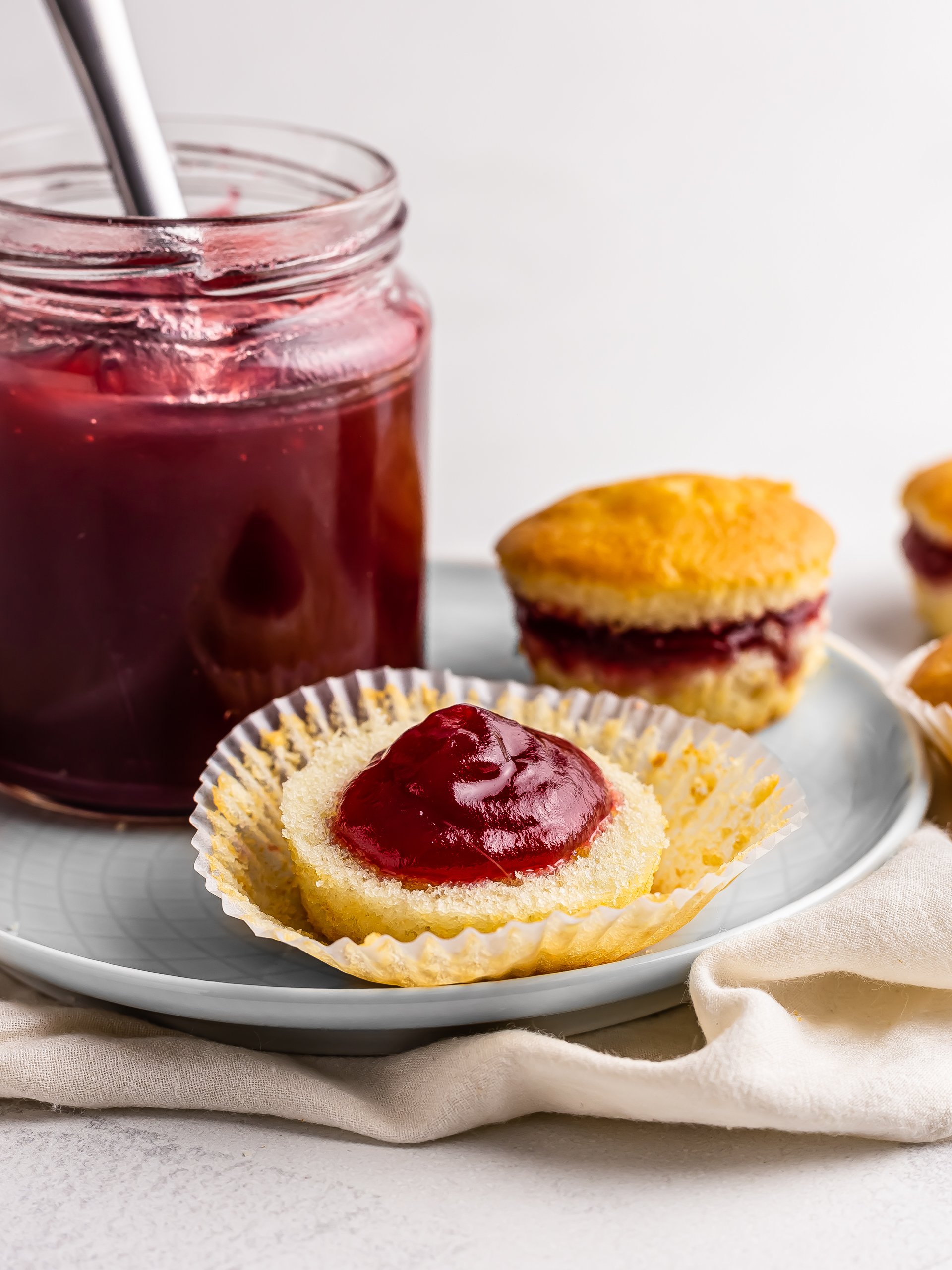
Not all apples are rich in pectin, so you have to choose wisely. Apples with lots of pectin include:
Granny Smith
Golden Delicious
Green apples in general (especially if underripe)
We used apples to make our sugar-free plum jam, sugar-free mango jam, and sugar-free raspberry jam. Check them out for precise instructions on how to use apples to make jam.
We love using apples when making sugar-free jams because it's so simple: add a few apples to the pot and let them cook with the rest of the fruit.

In addition, apples are an excellent option to add extra sweetness to a jam, useful when your chosen fruit is not particularly sweet.
One thing to keep in mind about apples, though, is that they can oxidise and take on a dull hue. Dark coloured jams like those made with blueberries or blackberries won't be affected. But others, like peach jam, may lose a little bit of their shiny colour.
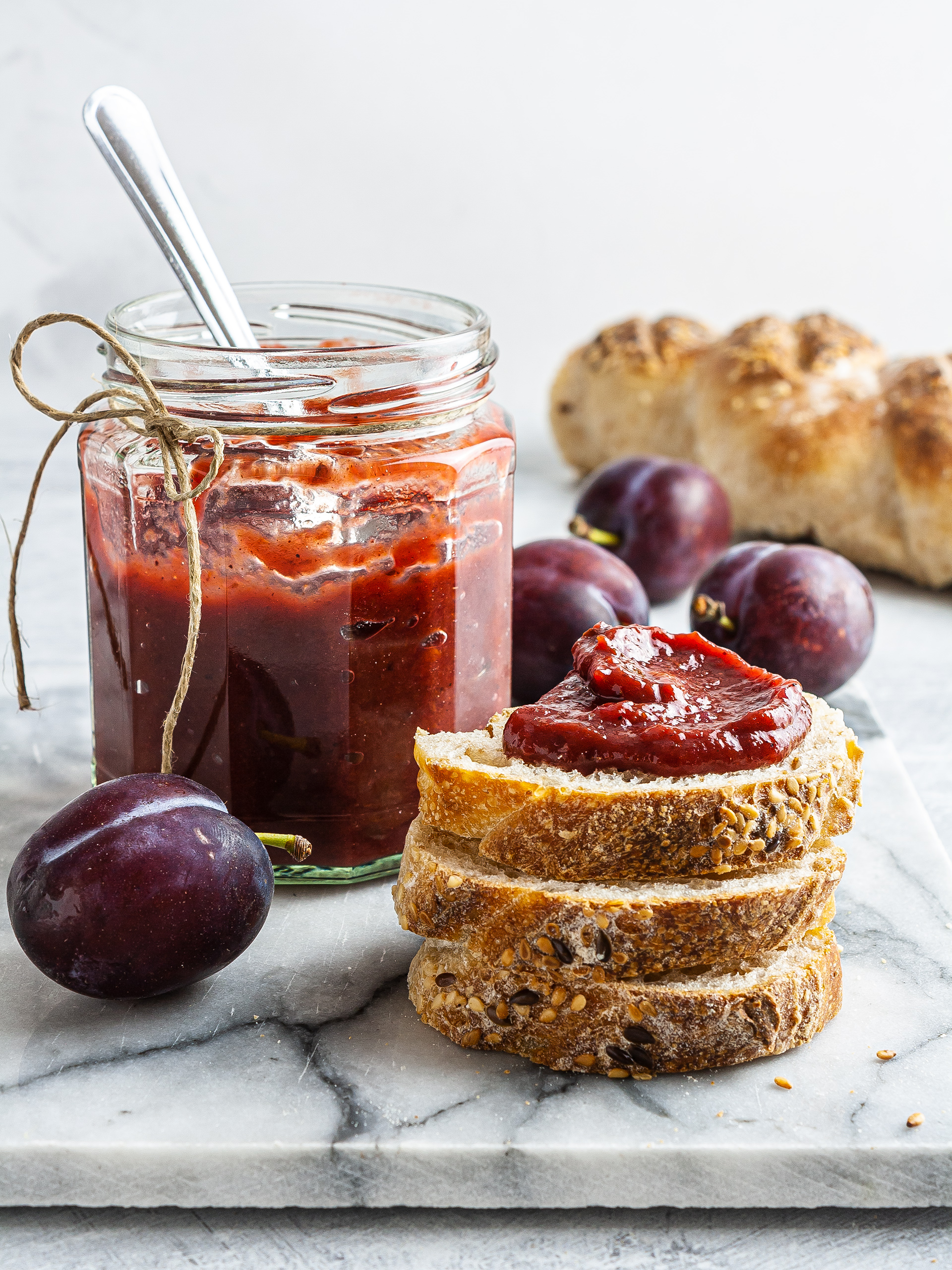
So if you're making a light-coloured jam, and you want to keep it at its prettiest, you have two options:
Use the starch method below;
Add a splash of lemon to the jam to keep it from oxidising.
How to make sugar-free jam with flaxseeds instead of pectin
If you are a vegan baker, you may already know that flaxseeds mixed with water turn into a rather viscous substance, similar to egg yolk.
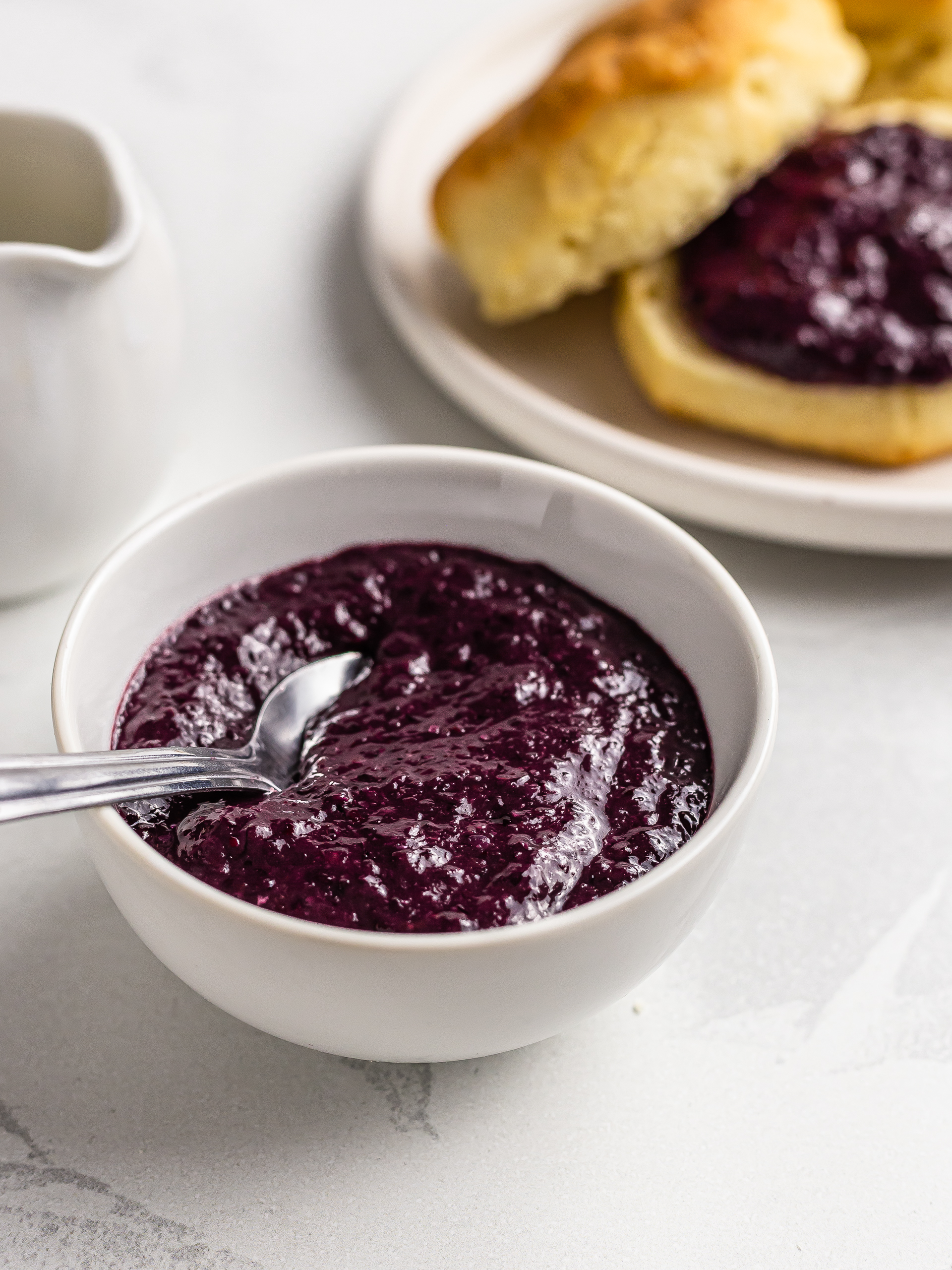
Well, we can use this property of flaxseeds to thicken our jams!
A big advantage to this method is that you'll give your jams all the precious fibres and proteins of flaxseeds.
If you want to learn how to use flaxseeds to make jams without sugar, check out our sugar-free blueberry jam and sugar-free cherry jam recipes.
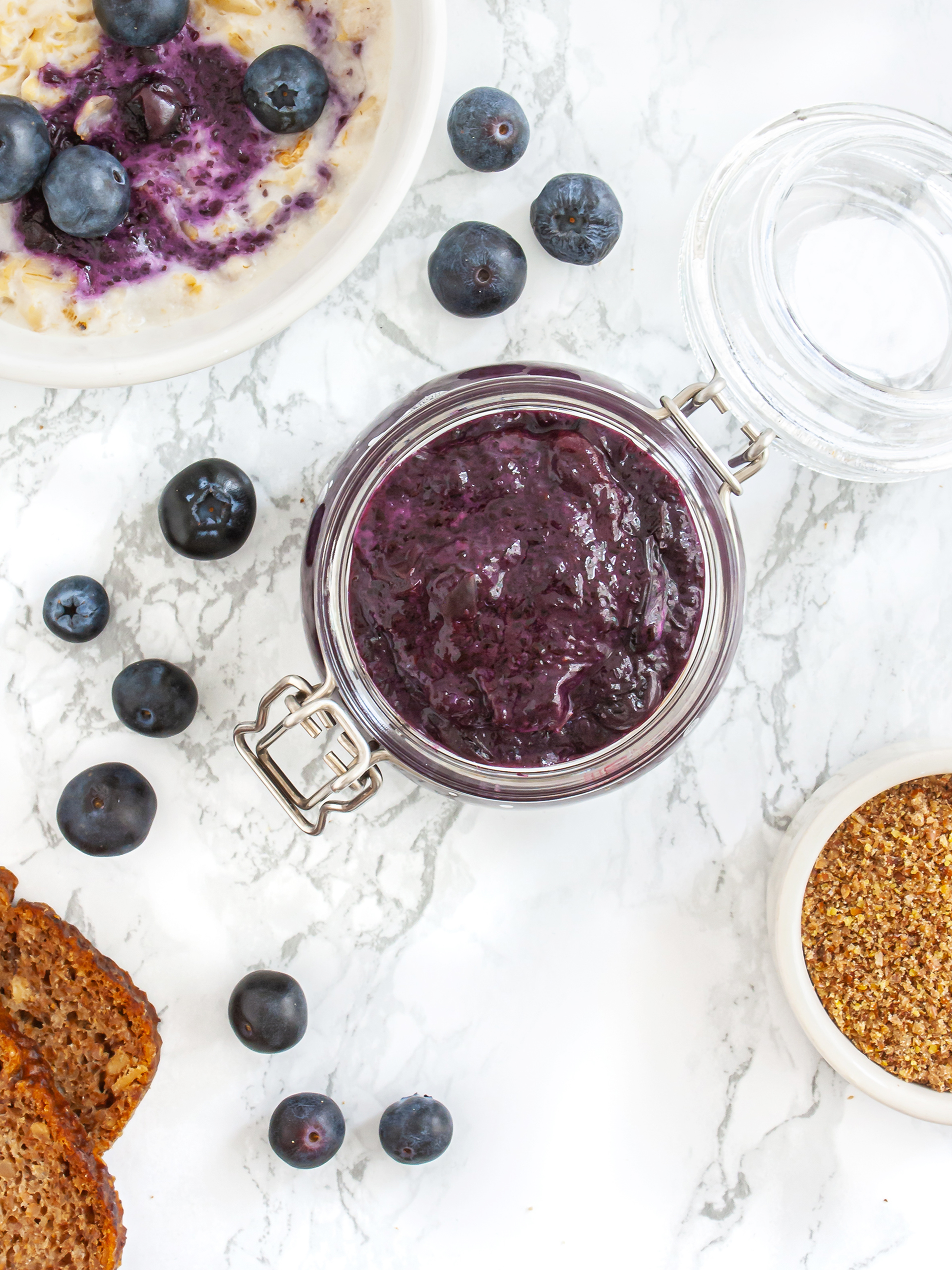
How to make sugar-free jam with chia seeds instead of pectin
If you like your jams with bits and seeds, you'll love using chia seeds to thicken your jams.
We've used these incredibly healthy and high-protein seeds to make our sugar-free blackberry jam.
Just like flaxseeds, chia seeds will get very gooey when mixed with water — actually, even more so than flaxseeds.
Thus, chia seeds are a great choice to thicken jams made with high-water-content fruit, like strawberries.

But great power comes at a price!
Contrary to apples and flaxseeds, using chia seeds will strew your jam with tiny black dots that will be visible in light-coloured jams. Plus, you'll also feel the seeds when eating the jam — albeit not much.
That's why we used chia to make our blackberry jam. Blackberries are dark (so you won't see the chia) and have seeds (so you won't feel the added chia seeds).
Luckily, there's a way to get an equally thick jam without affecting its look and feel: starch.
How to make sugar-free jam with starch instead of pectin

Using starch to thicken jam has two big advantages:
it's the cheapest way to thicken sugar-free jams;
it perfectly preserves the colour of the fruit;
it doesn't affect the texture of the jam at all, unlike chia eggs.
But, contrary to the methods above, it won't add any significant nutritional benefit to your jam.
Nonetheless, you can keep your jam very healthy if you don't discard the fibre-rich parts of your chosen fruit.
Which starch should you use?
Most starches will do. We use potato, tapioca, or corn starch interchangeably.
Want to see how well starch thickens jams? Check out our sugar-free strawberry jam and sugar-free orange marmalade.
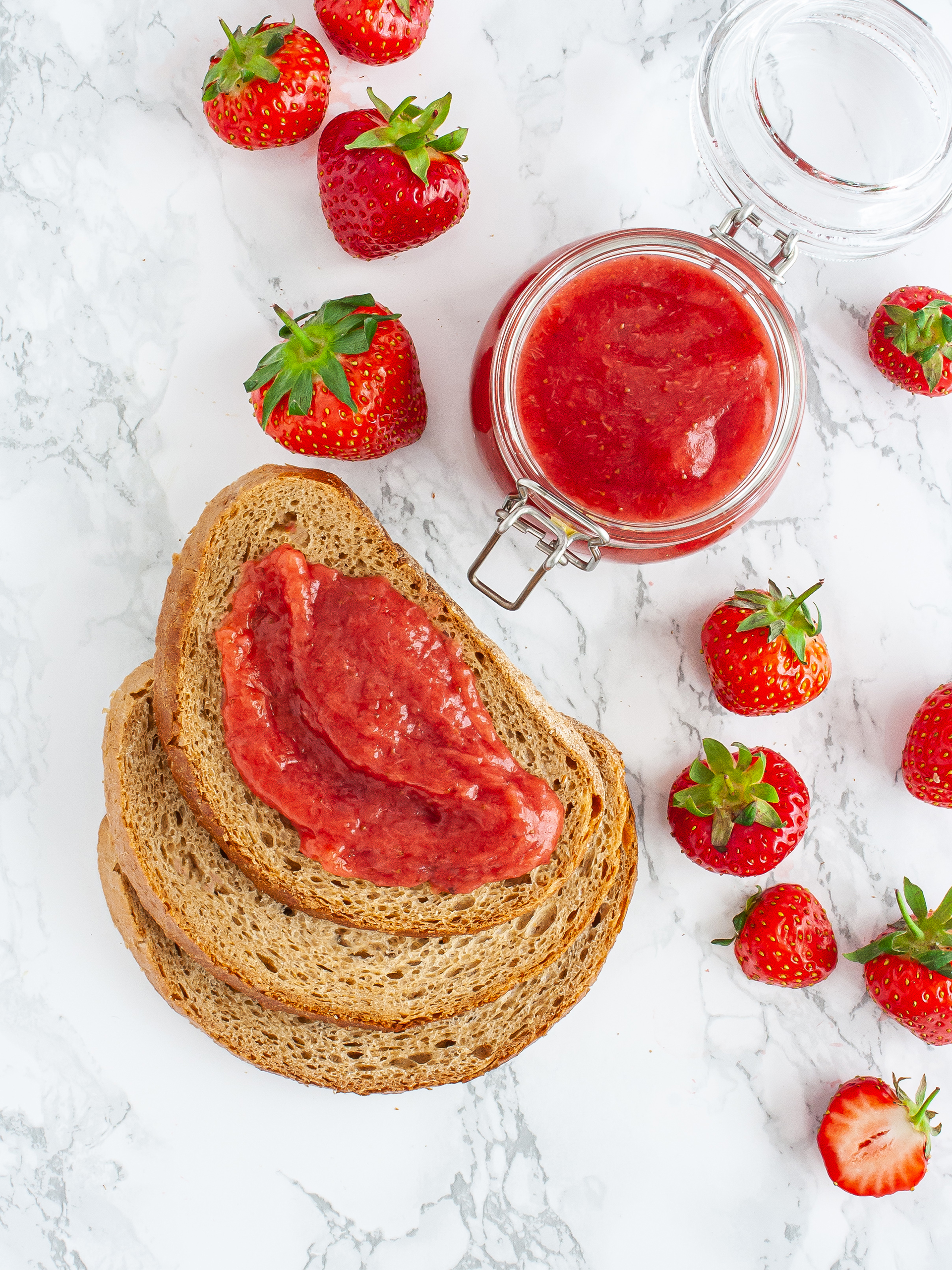
Oh, and starch also works well for savoury preserves, like our Asian chilli jam.
Conclusion
I hope this article on how to make sugar-free and pectin-free jams has taught you something valuable.
The world of healthy jams is yours now!
Choose the most suitable method described above and turn your favourite jam super-healthy.


